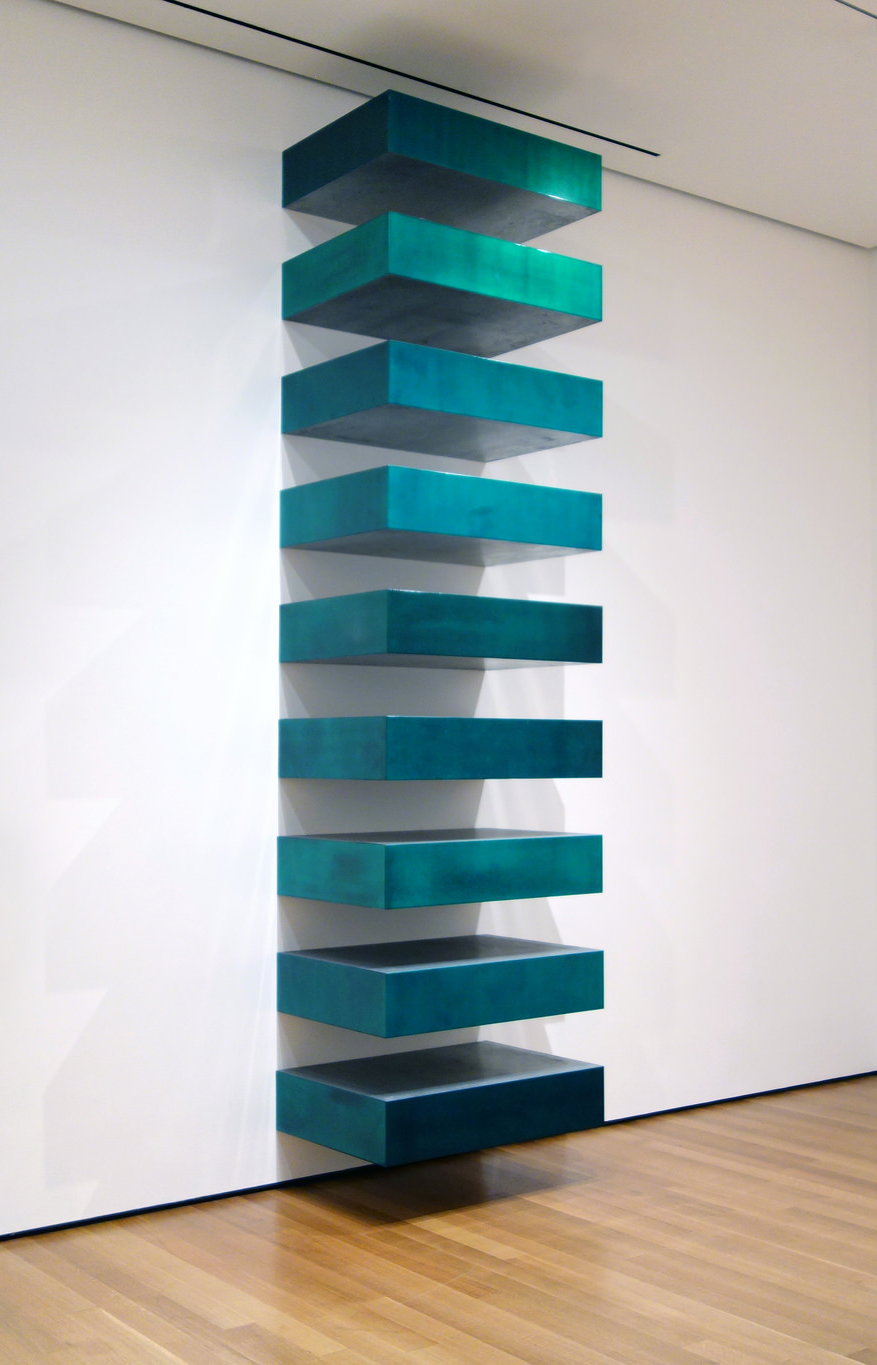
» Joseph Kosuth, One and Three Chairs
Joseph Kosuth One and Three Chairs (Une et trois chaises) 1965. Joseph Kosuth (1945, États-Unis). est conceptuel (par sa nature), parce que l'art n'existe que conceptuellement. » One and Three Chairs, qui met en scène un objet choisi pour sa banalité, reprend le readymade là où Duchamp l'avait laissé ; il l'enferme dans une.

301 Moved Permanently
Semiotics Joseph Kosuth, One and Three Chairs (detail), 1965, wood folding chair, mounted photograph of a chair, and mounted photographic enlargement of the dictionary definition of "chair" (MoMA)
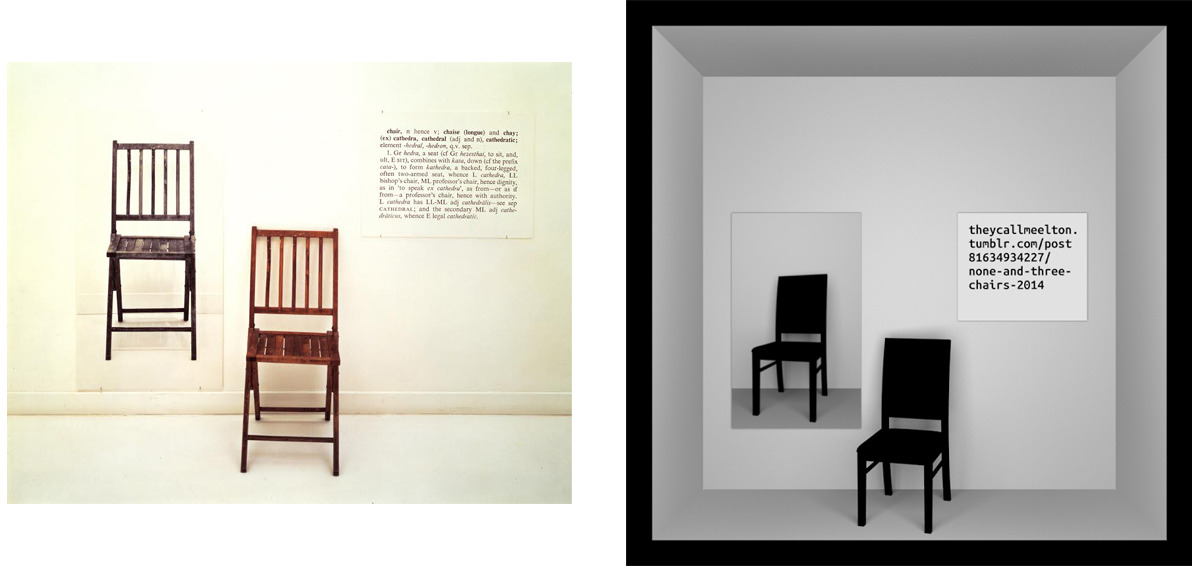
Who Wore It Better
One and Three Chairs, 1965, is a work by Joseph Kosuth. An example of conceptual art, the piece consists of a chair, a photograph of the chair, and an enlarged dictionary definition of the word "chair". The photograph depicts the chair as it is actually installed in the room, and thus the work changes each time it is installed in a new venue.
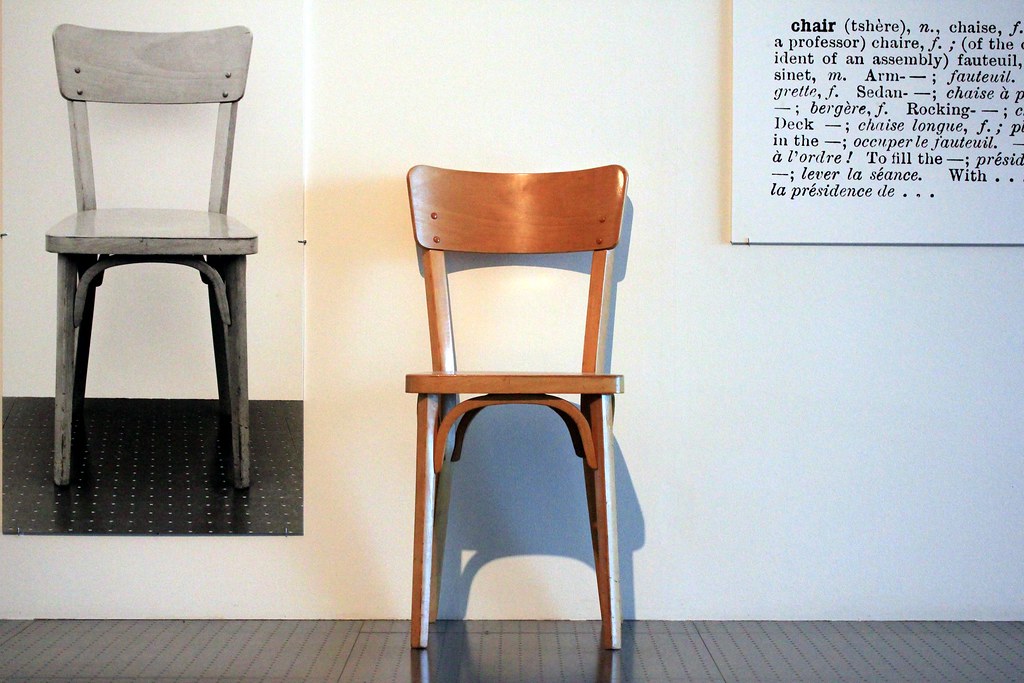
One and Three Chairs, 1965 Joseph Kosuth Centre Pompidou… Flickr
In 1965 Kosuth conceived a number of works using words written in neon that conveyed nothing more than what they were: 'Five words in red neon', for example, consisted of the five words of the title written in red neon lights, while 'One and eight - a description (pink)' consisted of the words 'Neon Electric Light English Glass.
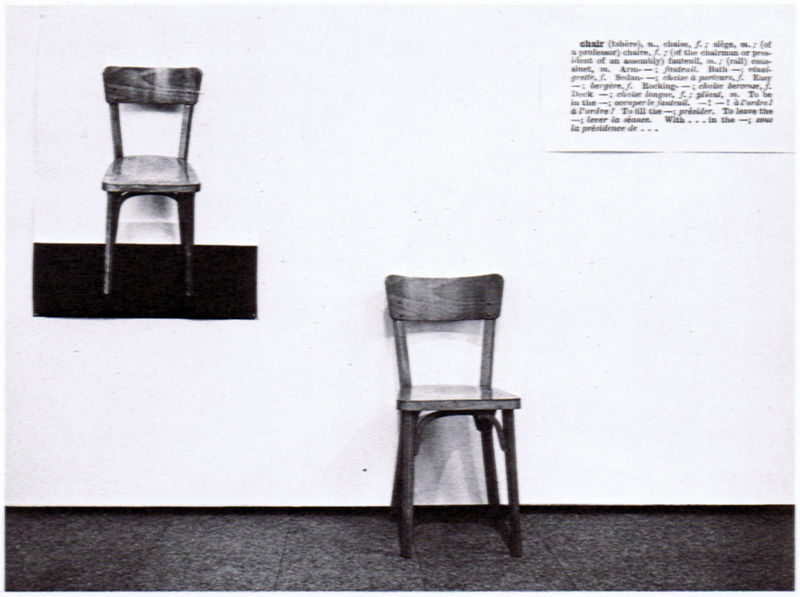
Extrait "One and three chairs" (1965), de Joseph Kosuth Entropie
Joseph Kosuth, a conceptual artist, has placed a wooden folding chair against the wall and flanked it with two prints: a black and white photograph of the chair, and a of its dictionary definition.
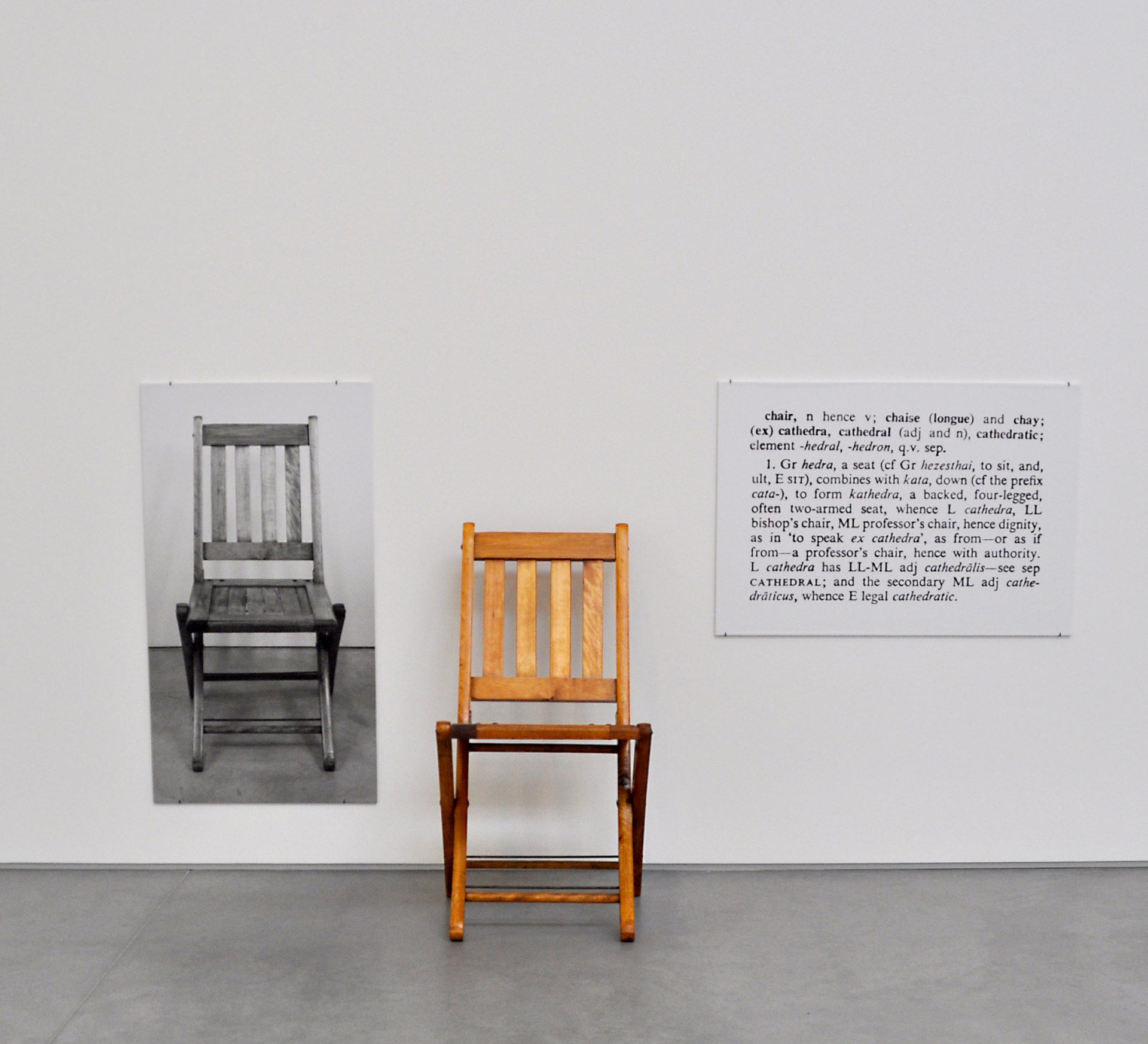
The Warehouse Dallas Joseph Kosuth
discussed in biography In Joseph Kosuth.created his first conceptual work, One and Three Chairs, which displayed an actual chair, its photograph, and a text with the definition of the word chair. This work was a milestone in the development of Western art, and it started a trend that favoured the idea or the concept of… Read More
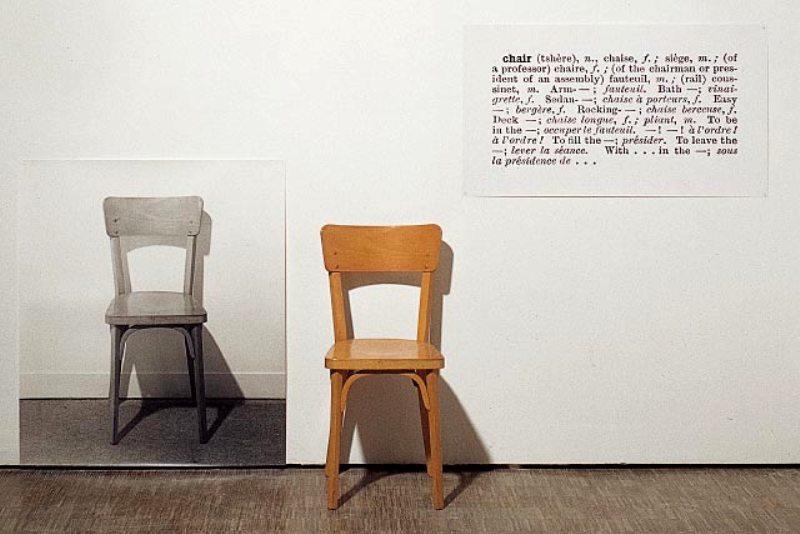
Espaço das Artes Os conceitos da arte
Joseph Kosuth's Self-Defined Object (Orange), 1966. Photograph: Zan Wimberley/Joseph Kosuth and Anna Schwartz Gallery.. One and Three Chairs (1965), in which a chair,.

3.211 Joseph Kosuth, "One and Three Chairs", 1965. Mounted photograph
American artist Joseph Kosuth is one of the primary figures associated with the 1960s movement known as Conceptual Art. Along with Sol Lewitt, Lawrence Weiner, and other conceptual artists, Kosuth approached art-making from a radical new perspective. For them, the totality of an artwork was the idea behind it.
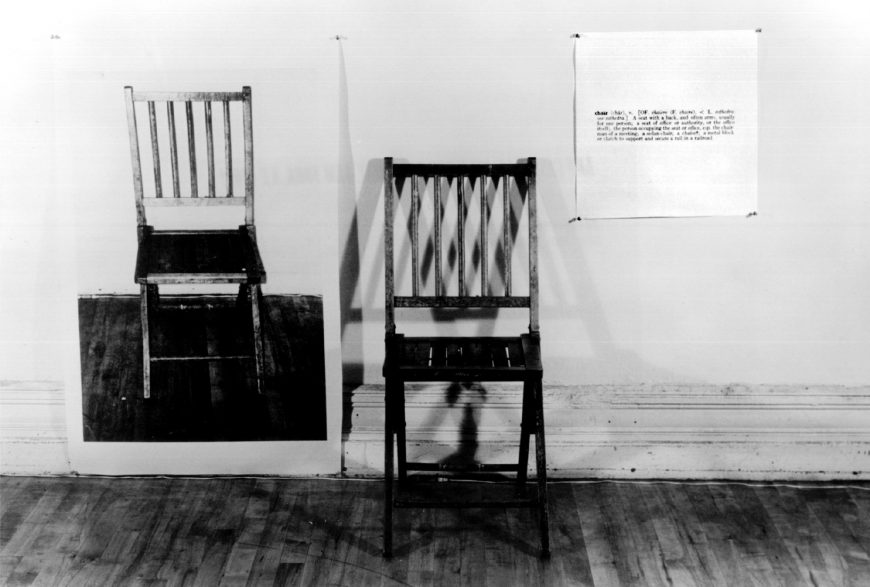
» Joseph Kosuth, One and Three Chairs
Early life and career Born in Toledo, Ohio, Kosuth had an American mother and a Hungarian father. [4] ( A relative, Lajos Kossuth, achieved notability for his role in the Hungarian Revolution of 1848 .) Joseph Kosuth attended the Toledo Museum School of Design from 1955 to 1962 and studied privately under the Belgian painter Line Bloom Draper. [5]

Thomas_DreherKonzeptuelle_KunstKosuthOne_and_Three_Chairs
Joseph Kosuth once wrote: "The art I call conceptual art is such because it is based on an inquiry into the nature of art." One and Three Chairs is considered one of the first conceptual pieces conceived by the artist, according to a criterion that he himself described as "anti-formalist" and which, tautologically, approaches one single thought process from three separate perspectives.

Image of Joseph Kosuth’s One and Three Chairs, 1965 Joseph kosuth
One and Three Chairs, 1965, is a work by Joseph Kosuth. An example of conceptual art, the piece consists of a chair, a photograph of the chair, and an enlarged dictionary definition of the word "chair". The photograph depicts the chair as it is actually installed in the room, and thus the work changes each time it is installed in a new venue.
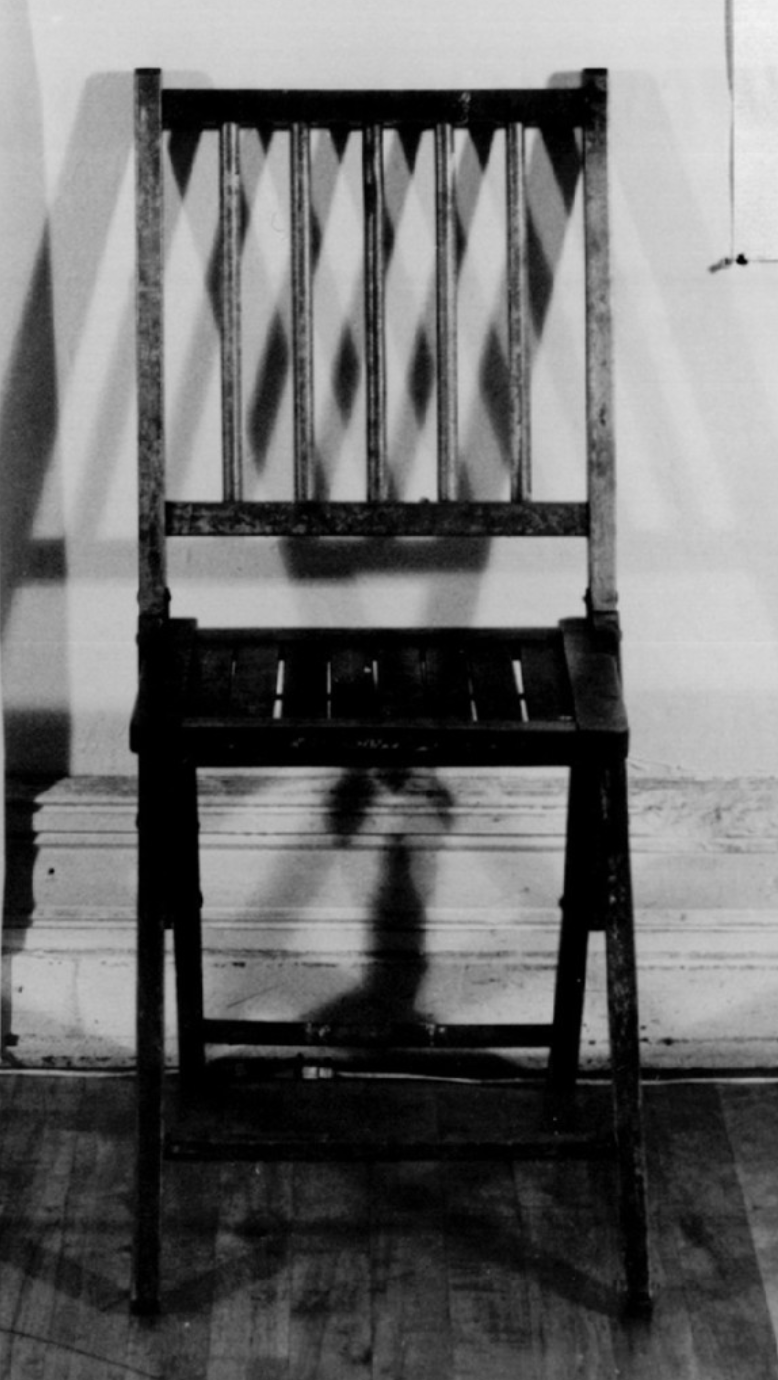
» Joseph Kosuth, One and Three Chairs
If both photograph and words describe a chair, how is their functioning different from that of the real chair, and what is Kosuth's artwork doing by adding these functions together? Prodded to ask such questions, the viewer embarks on the basic processes demanded by Conceptual art.
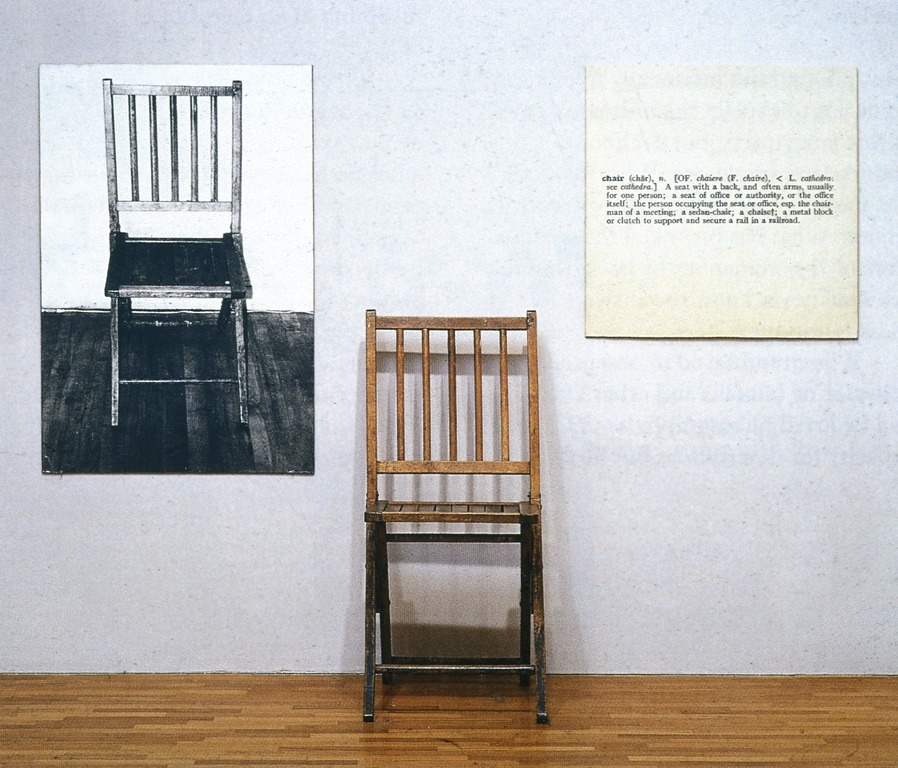
Cave to Canvas, Joseph Kosuth, One and Three Chairs, 1965 From...
One and Three Chairs, 1965, is a work by Joseph Kosuth. An example of conceptual art, the piece consists of a chair, a photograph of the chair, and an enlarged dictionary definition of the word "chair". The photograph depicts the chair as it is actually installed in the room, and thus the work changes each time it is installed in a new venue.

una y tres sillas kosuth Búsqueda de Google Arte conceptual, Sillas
If you have identified yourself as a confused museum visitor, imagine how the New York public behaved when the artwork One and Three Chairs by Joseph Kosuth (1945-), was first shown at MoMA in 1965. At that time, conceptual art, an art that is not necessarily linked to an aesthetic object, was beginning to emerge..
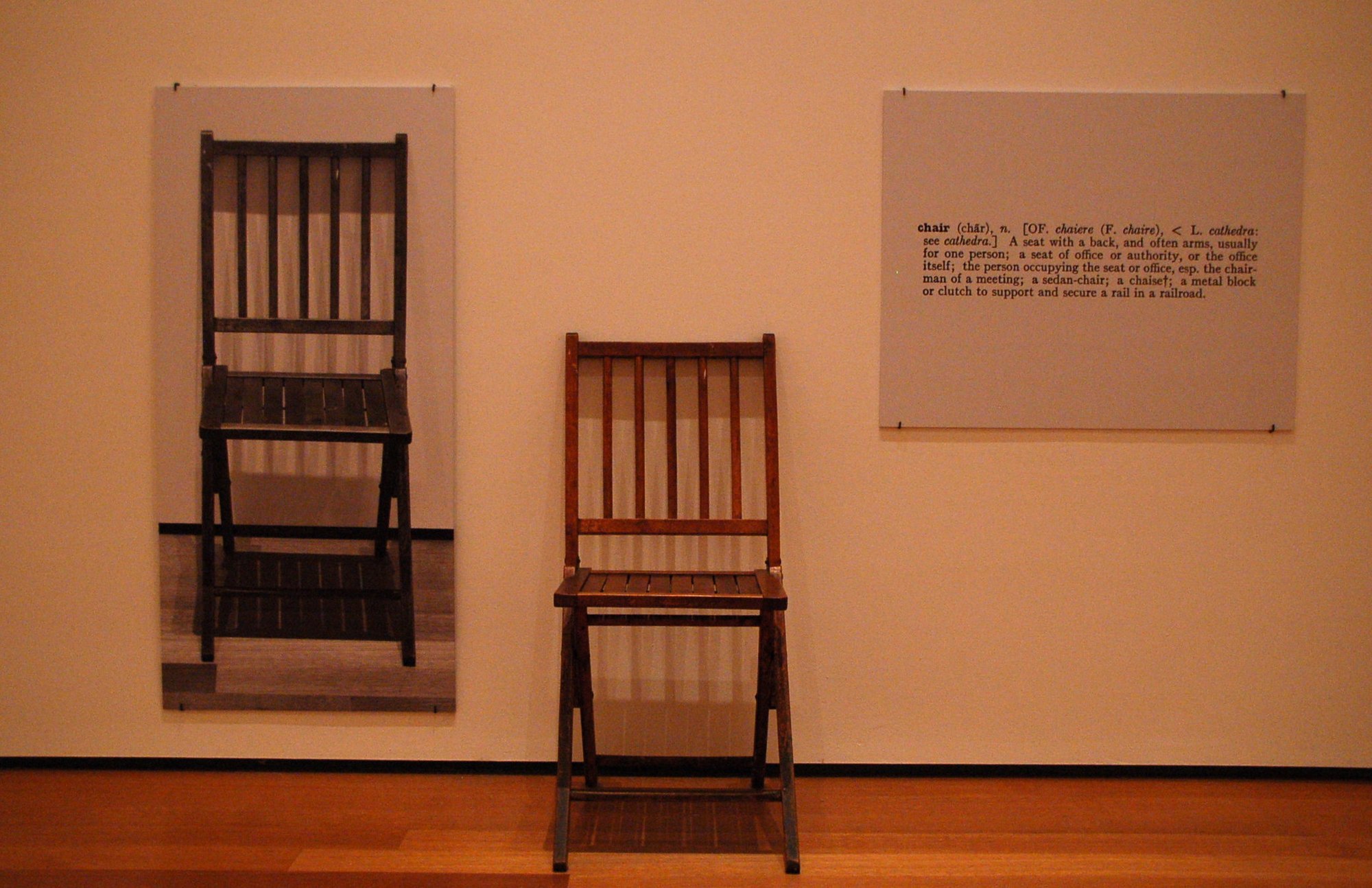
One and Three Chairs [Joseph Kosuth] Sartle Rogue Art History
Joseph Kosuth, One and Three Chairs, 1965. Courtesy the artist and Sean Kelly Gallery New York. - Joseph Kosuth. Iconic Works One and Three Chairs (1965) One of Kosuth's best-known works is One and Three Chairs (1965), which is his visual expression of Plato's Theory of Forms. The piece features a wooden chair, a photograph of the.
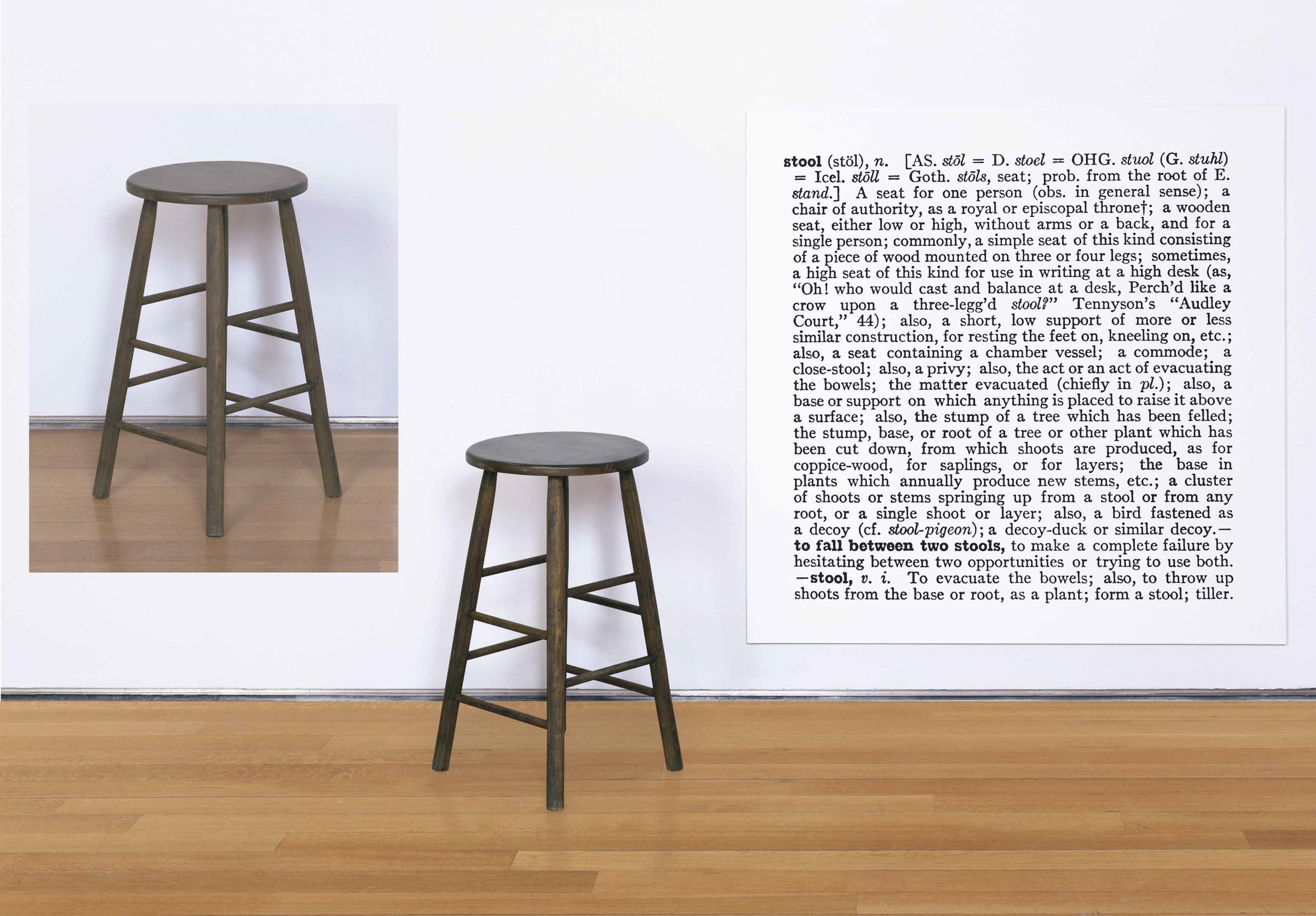
Kosuth Joseph 'One and Three Stools,' (1965) MutualArt
How does it do so? 2. Do you think there is a single relationship between words and images? What is it? Do any of the works convey that? Do you think that art is the best way to represent that relationship?